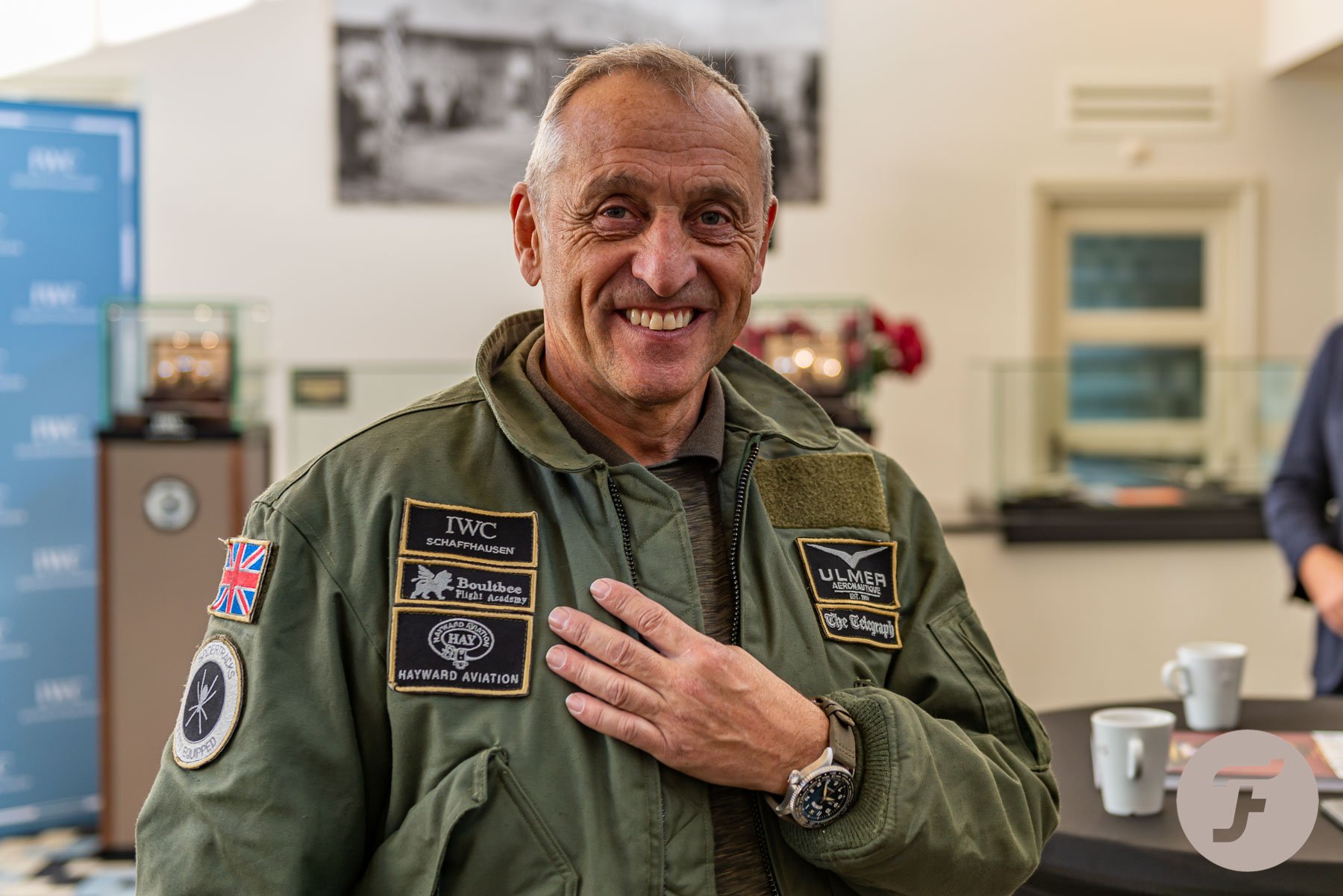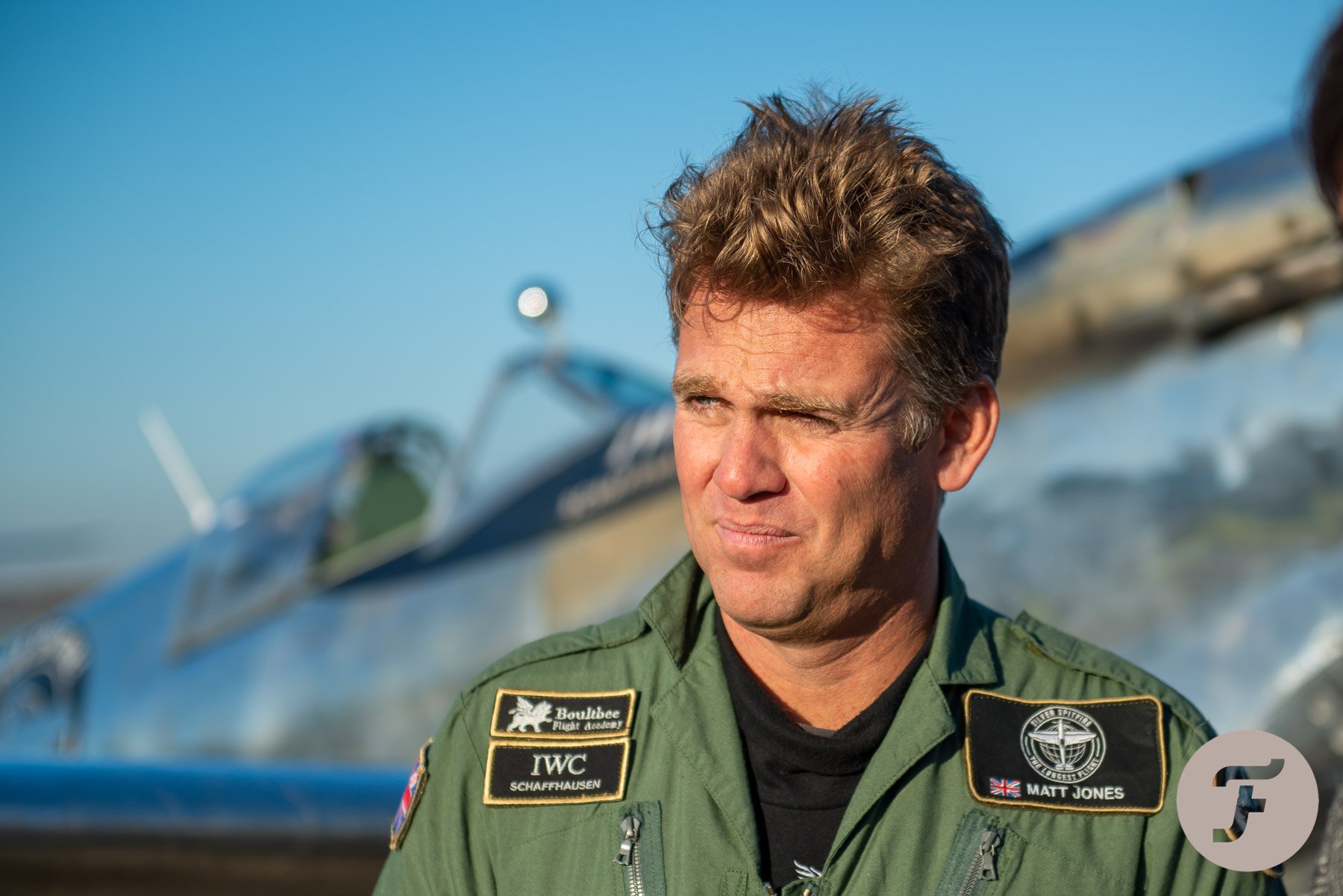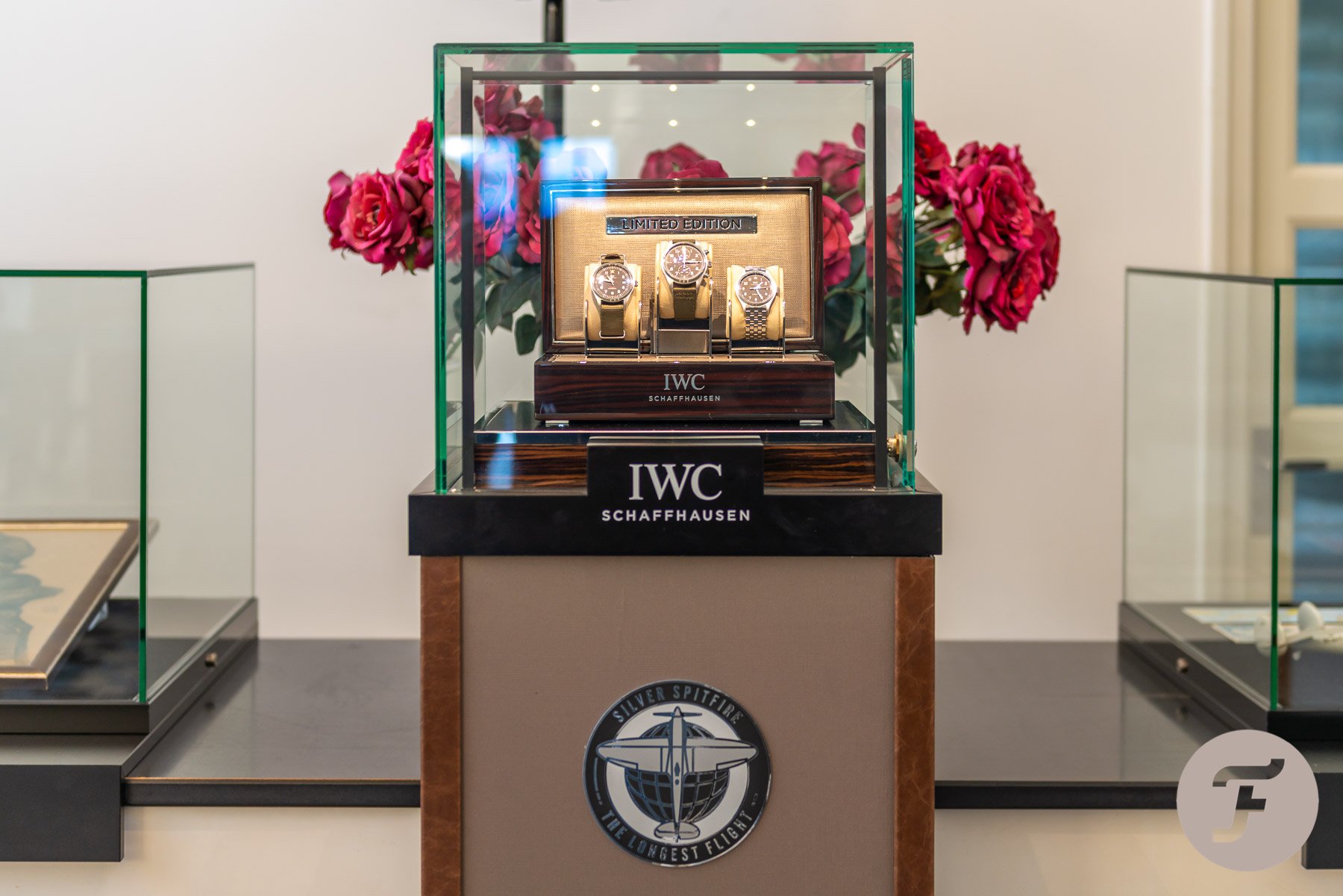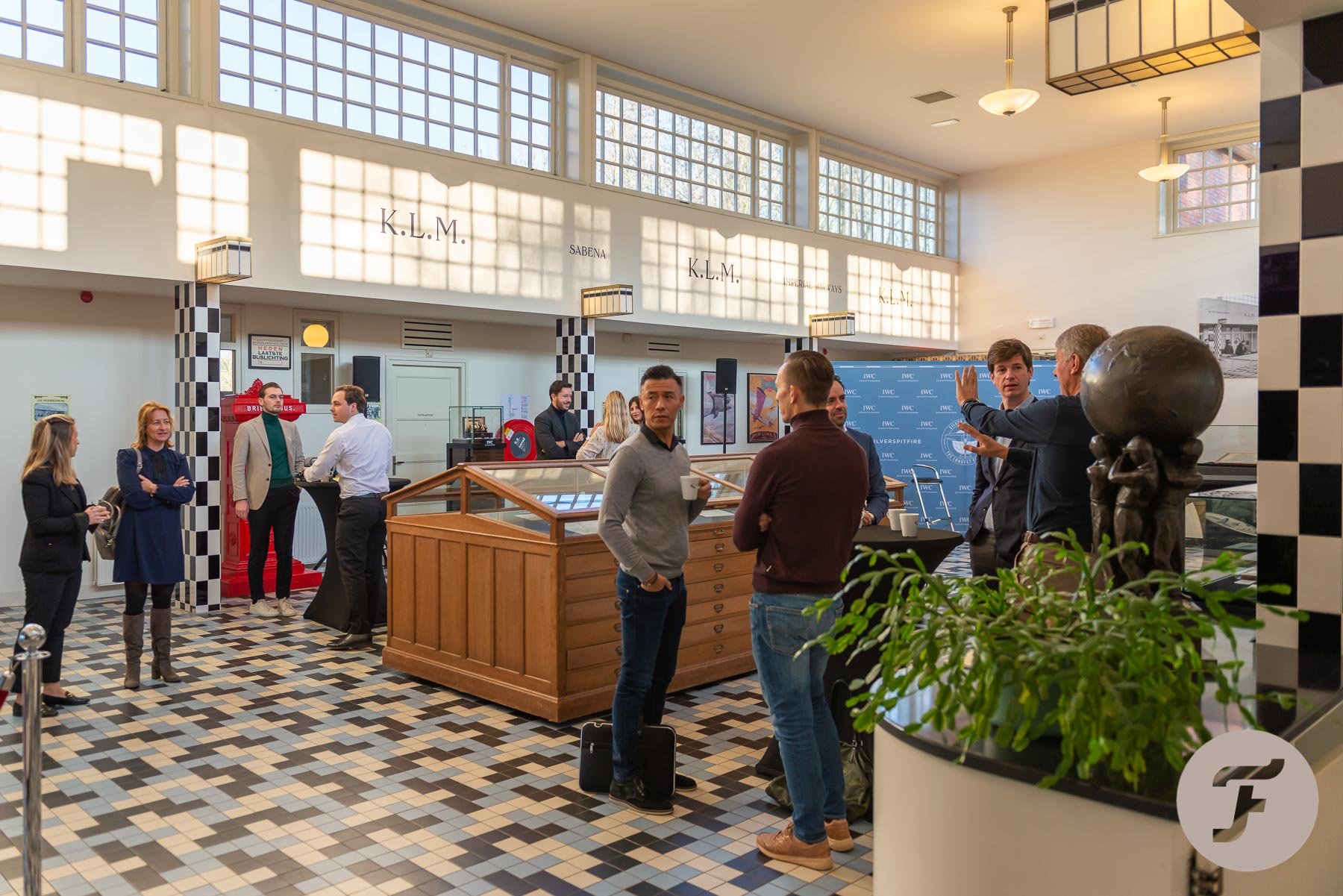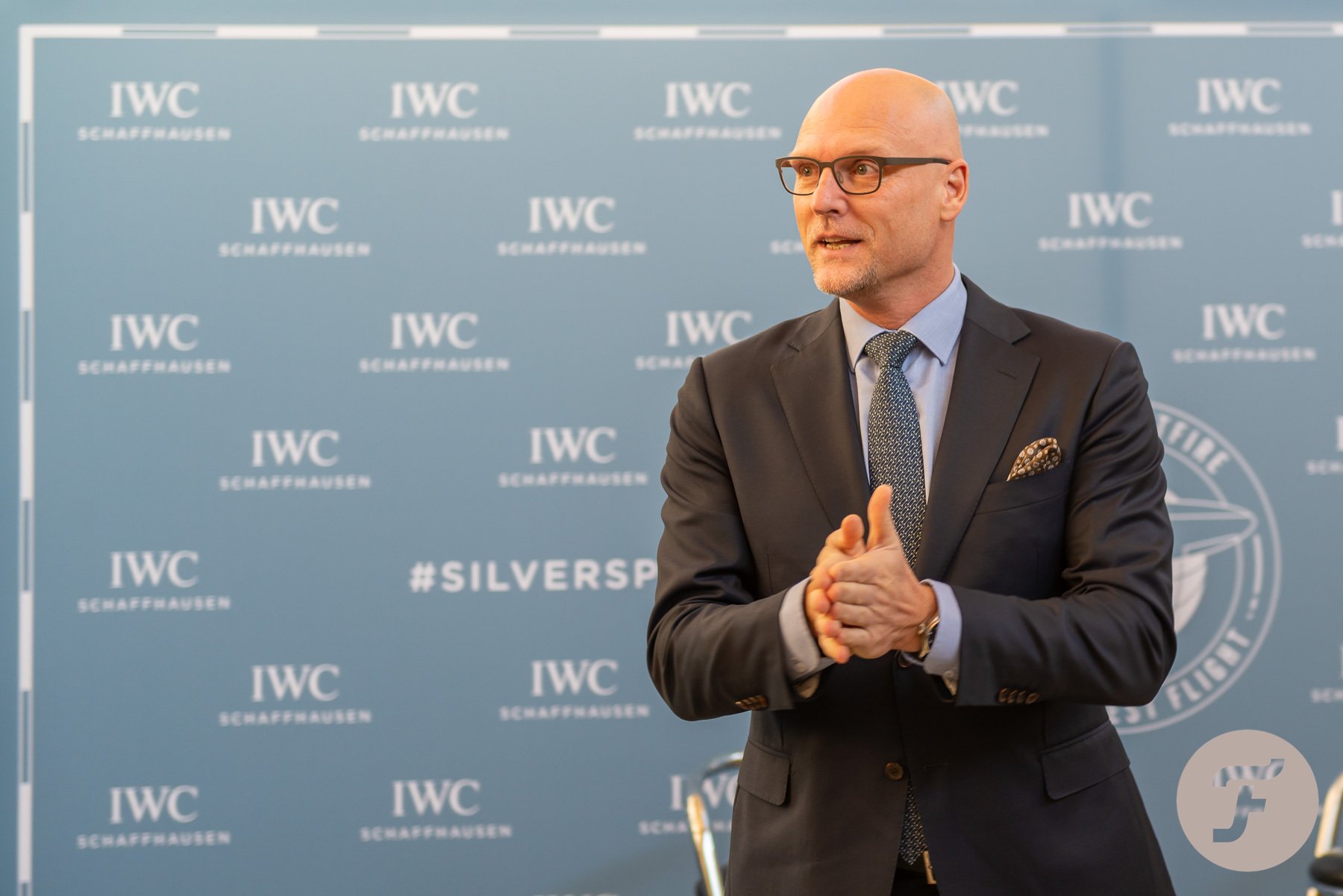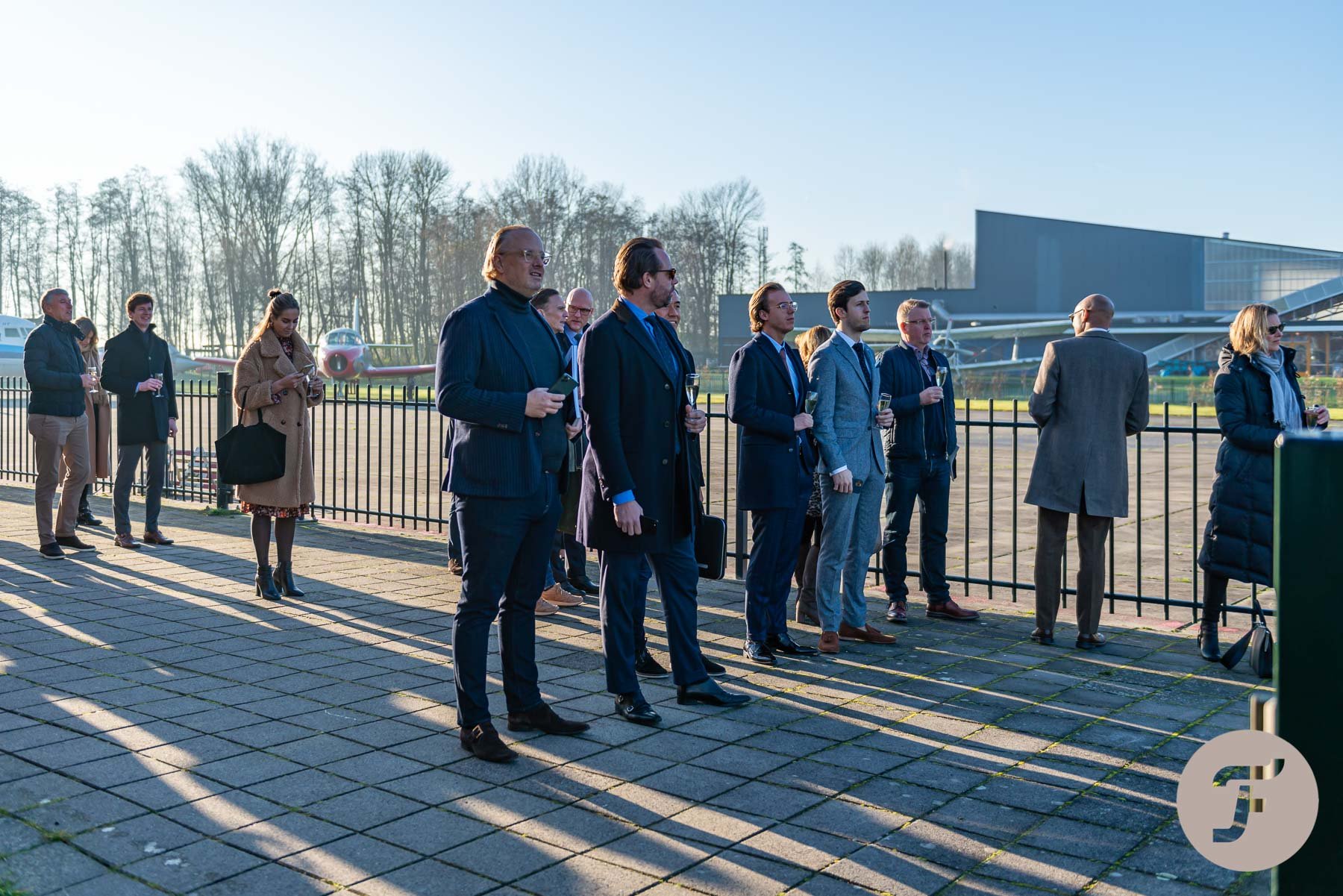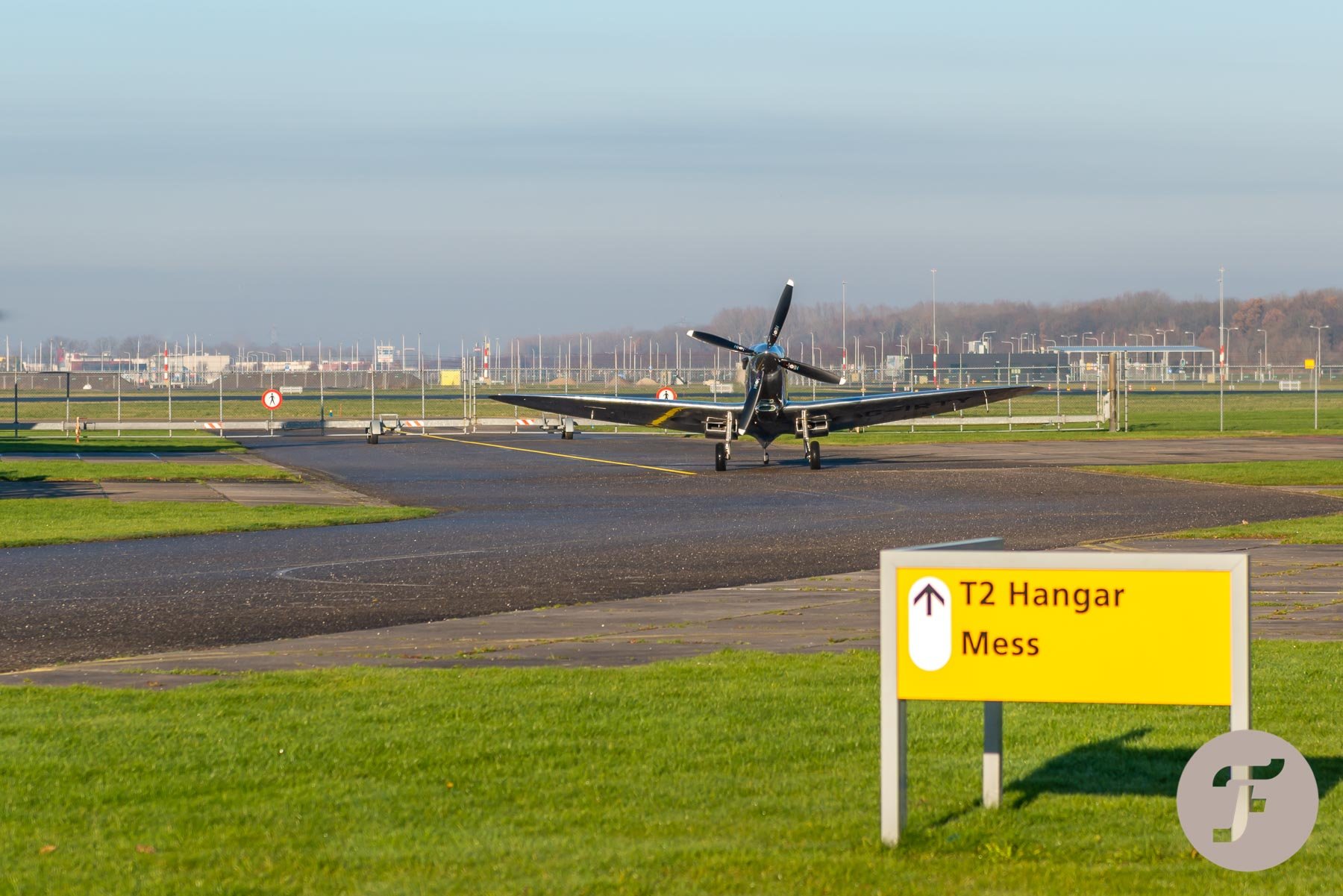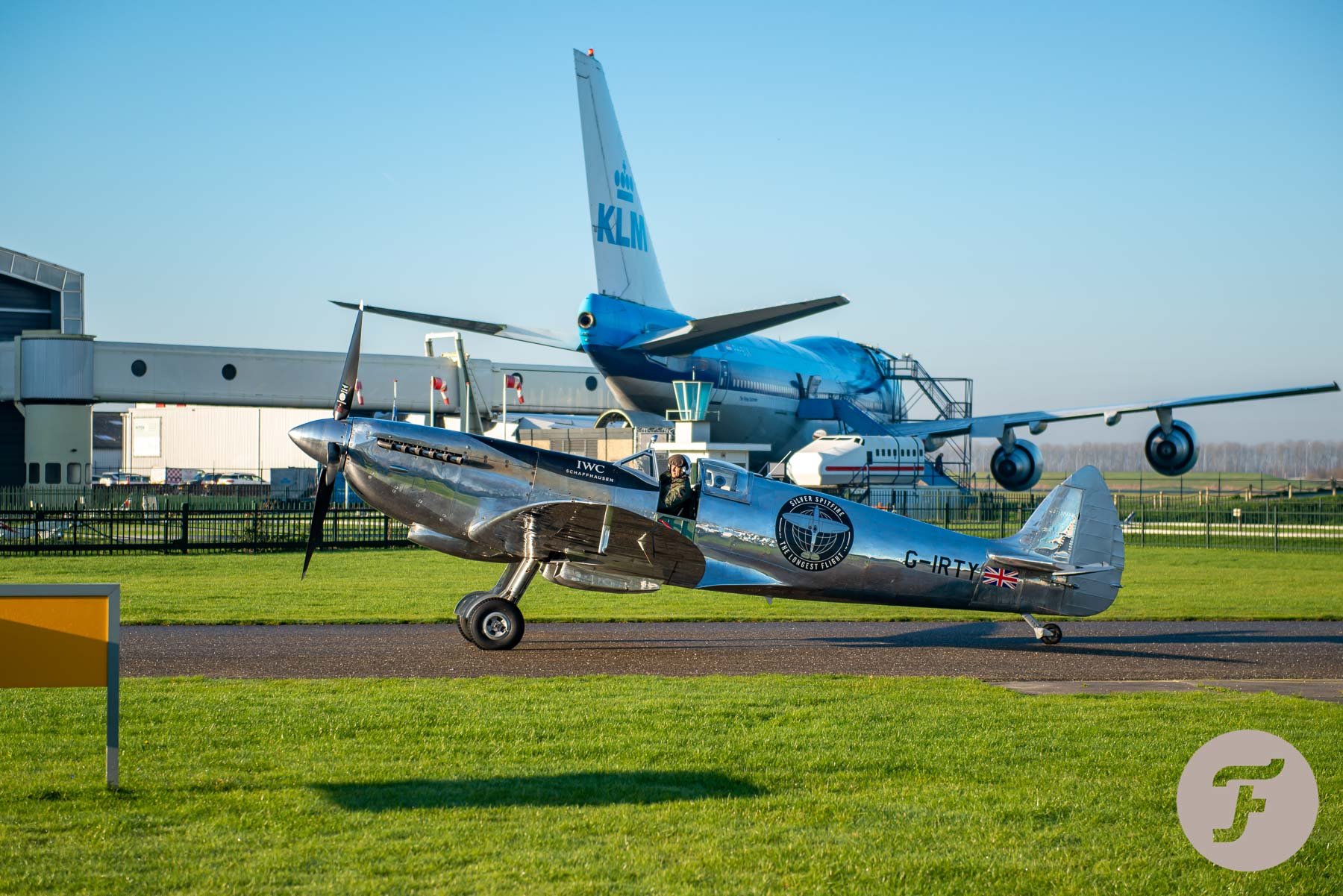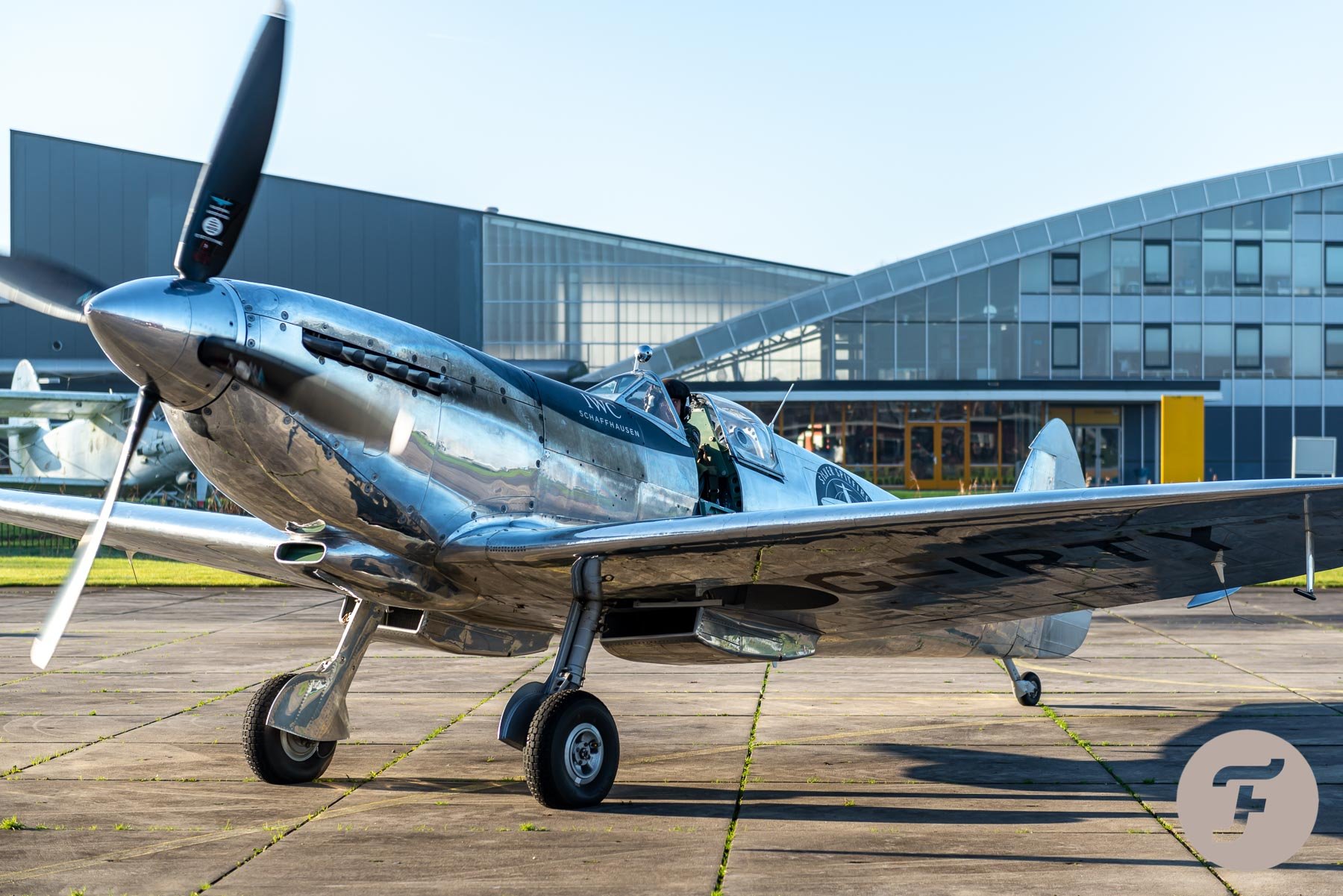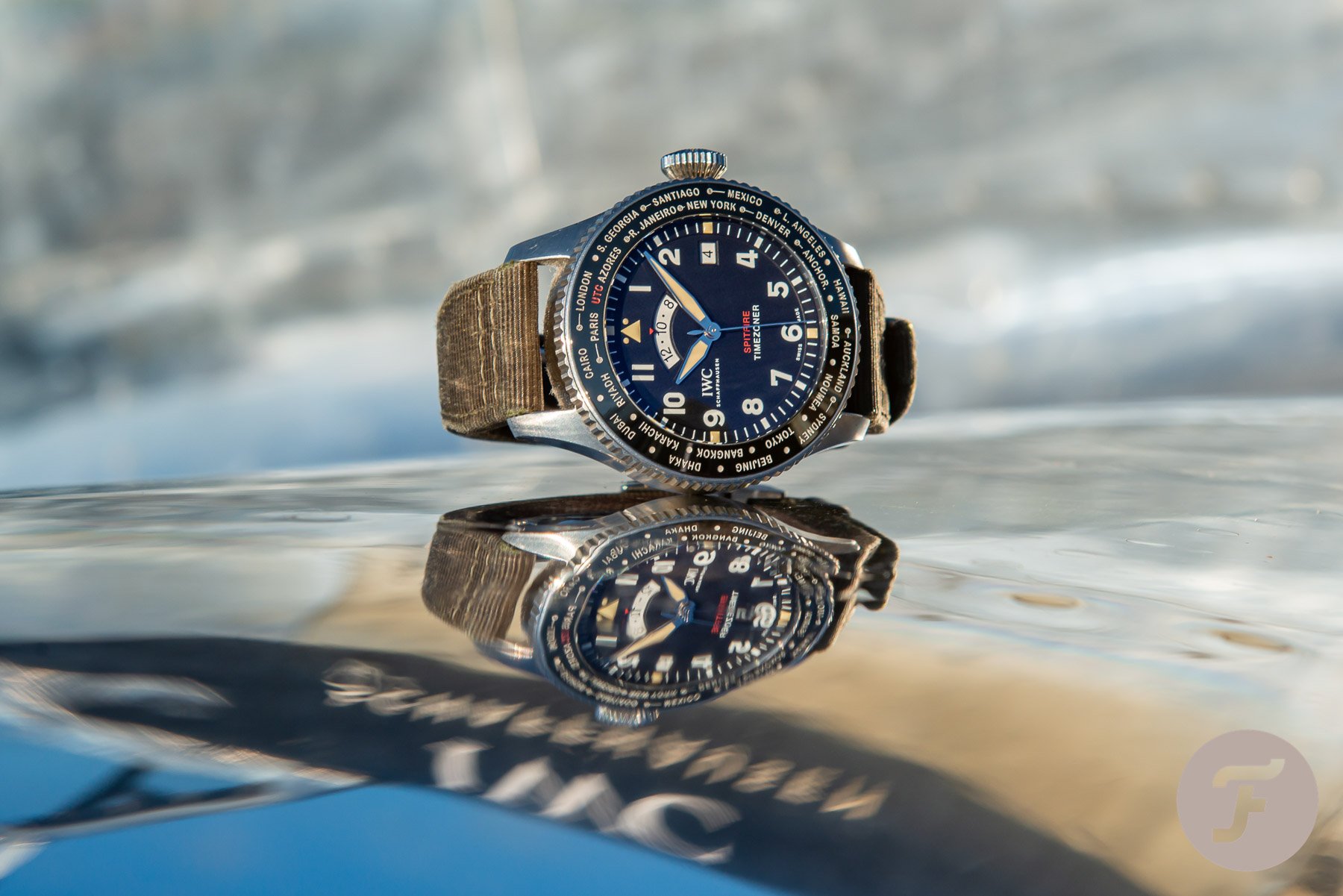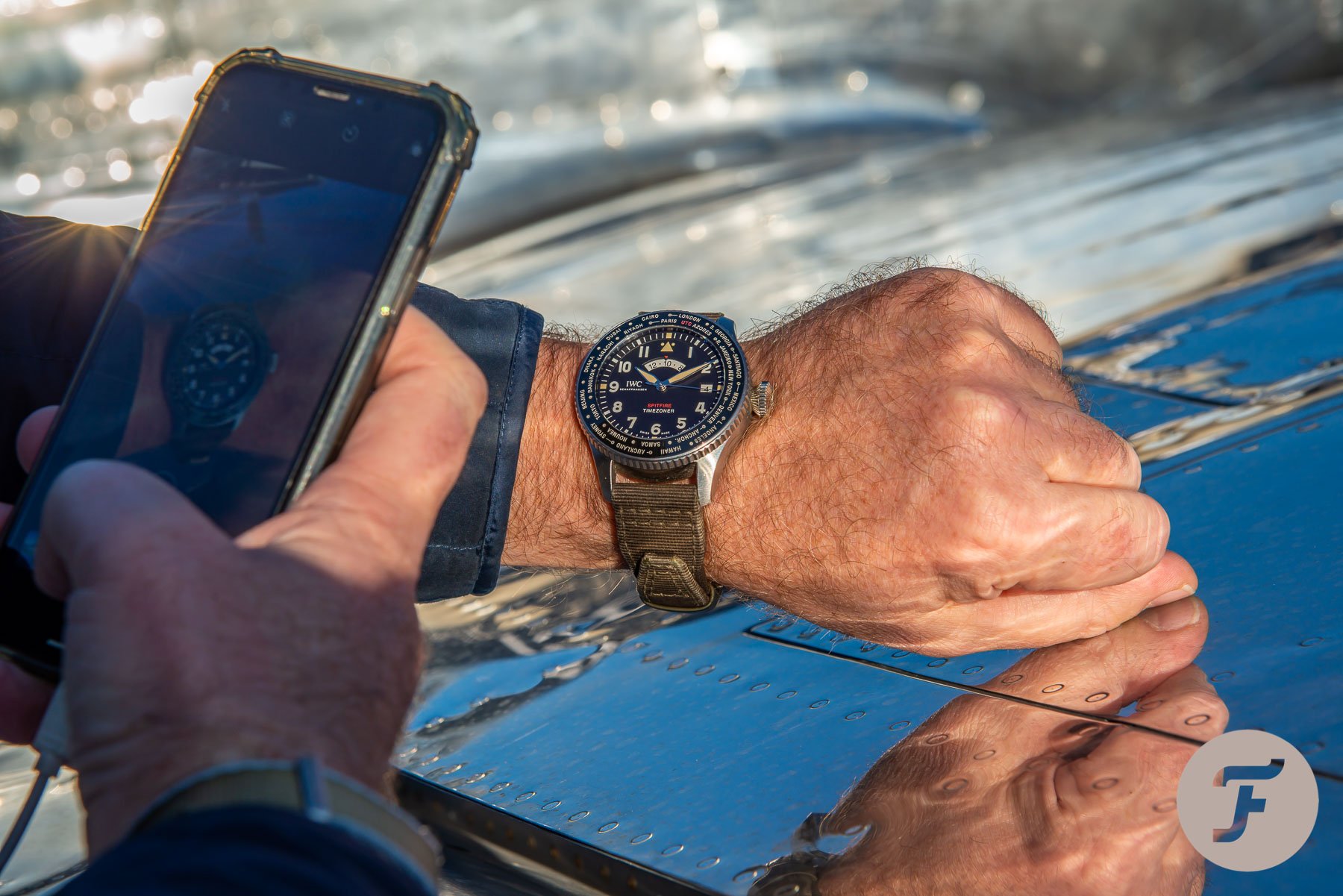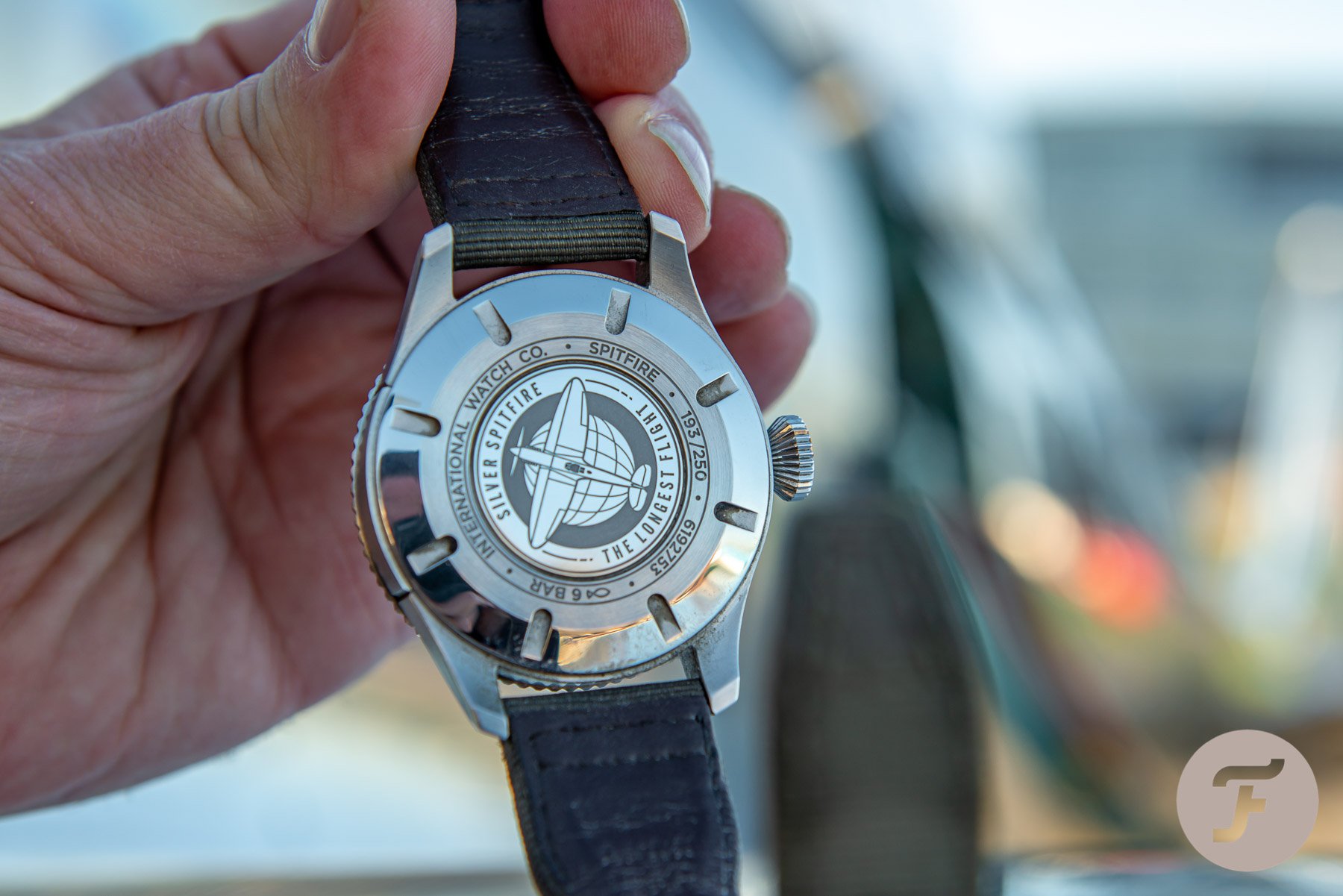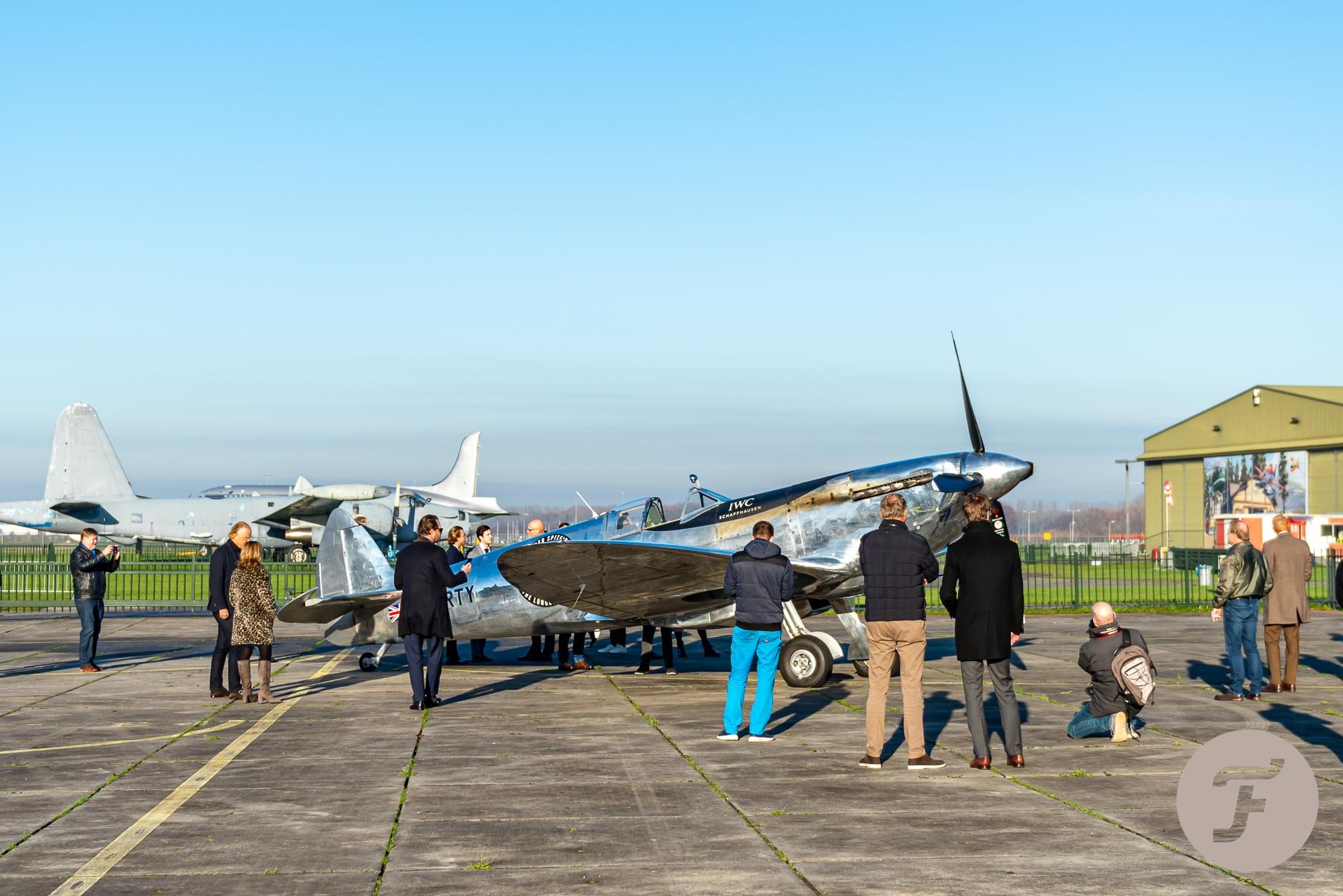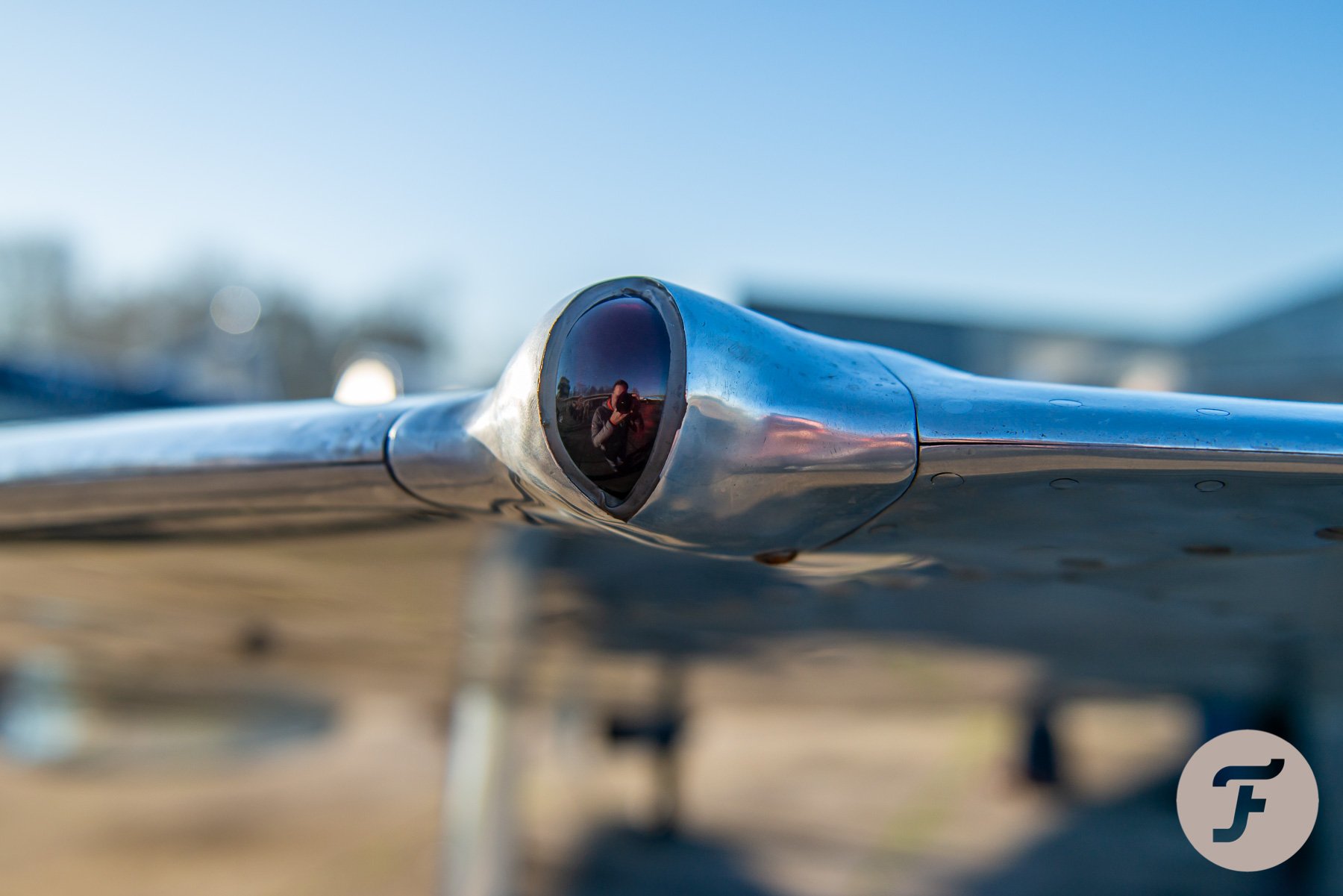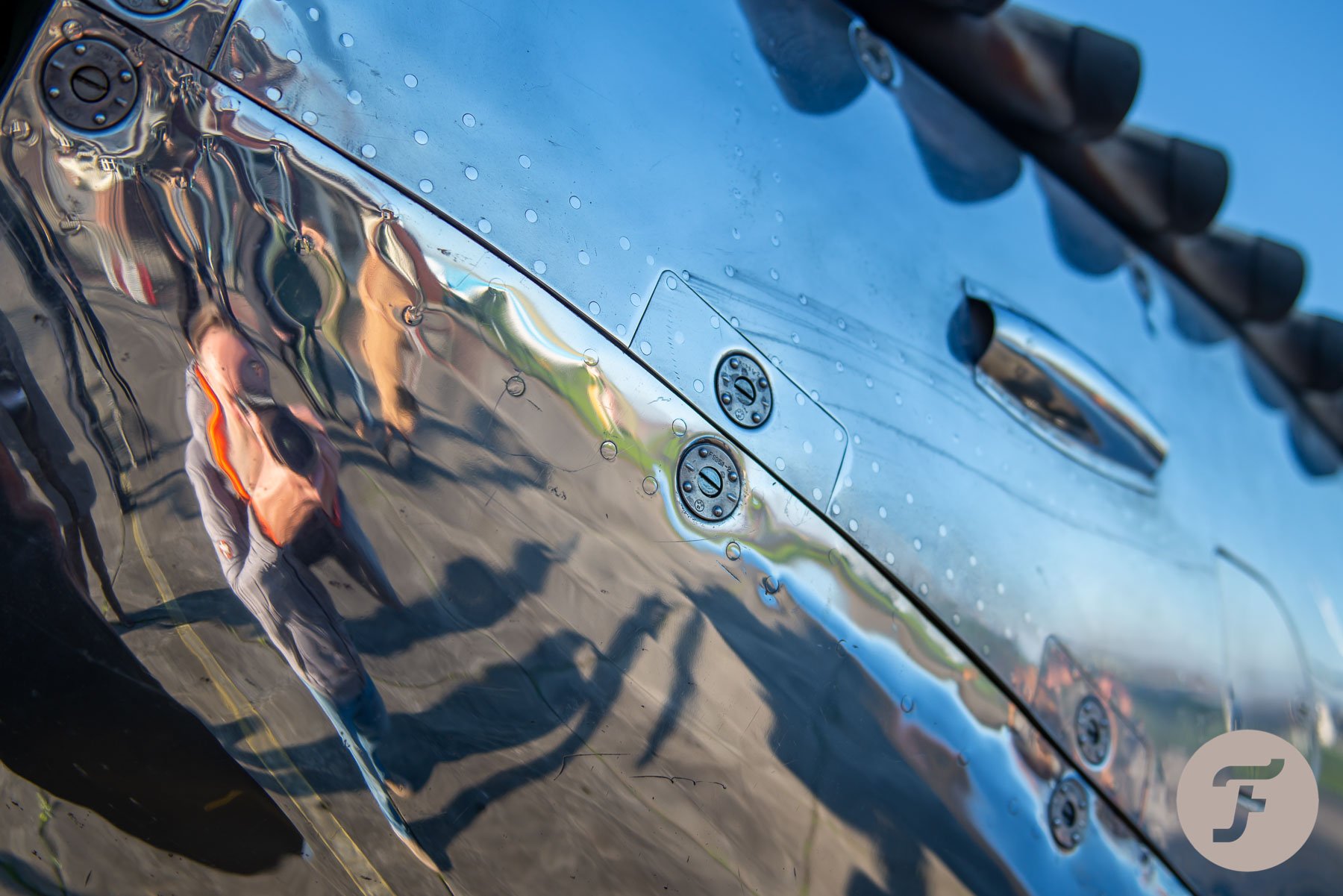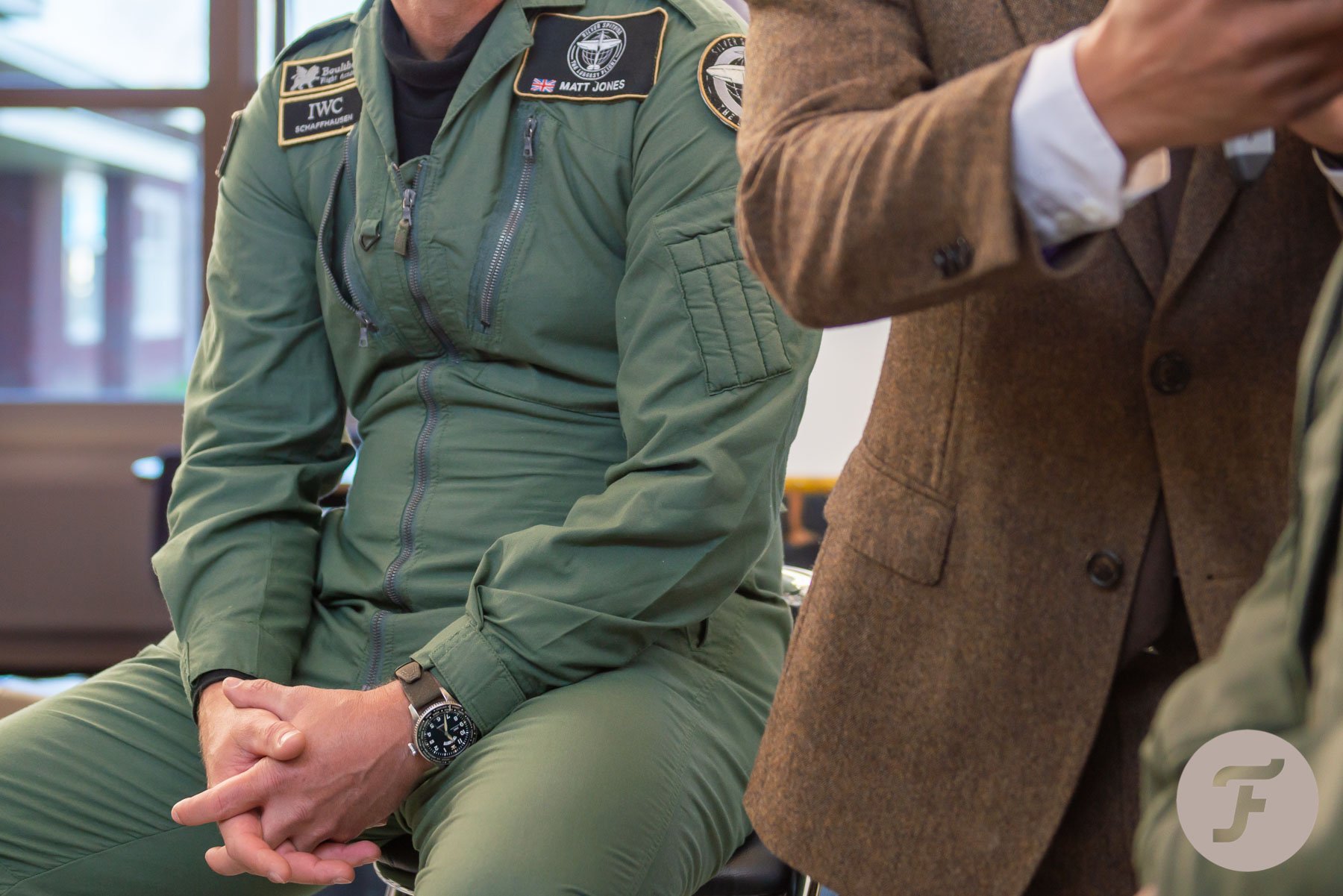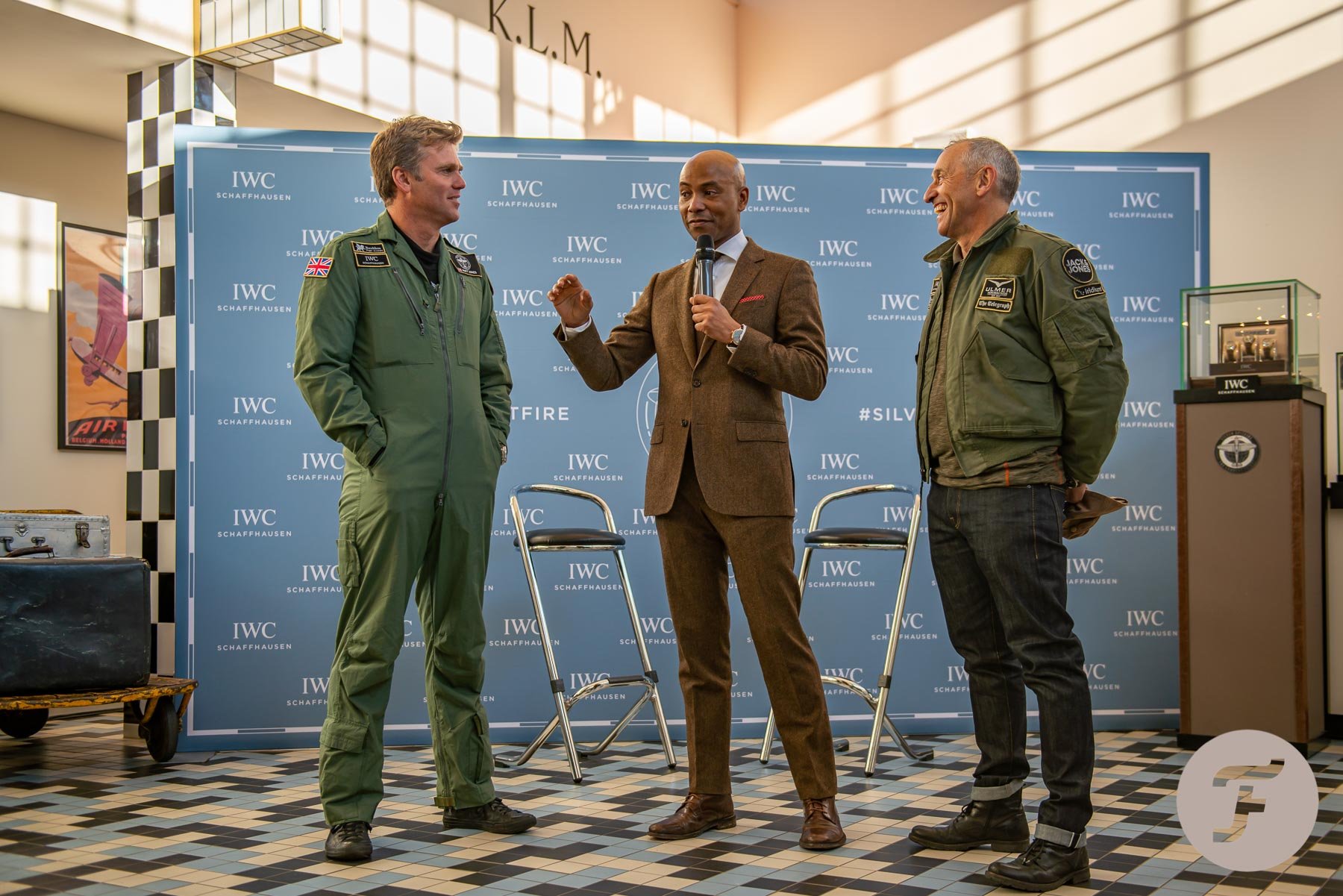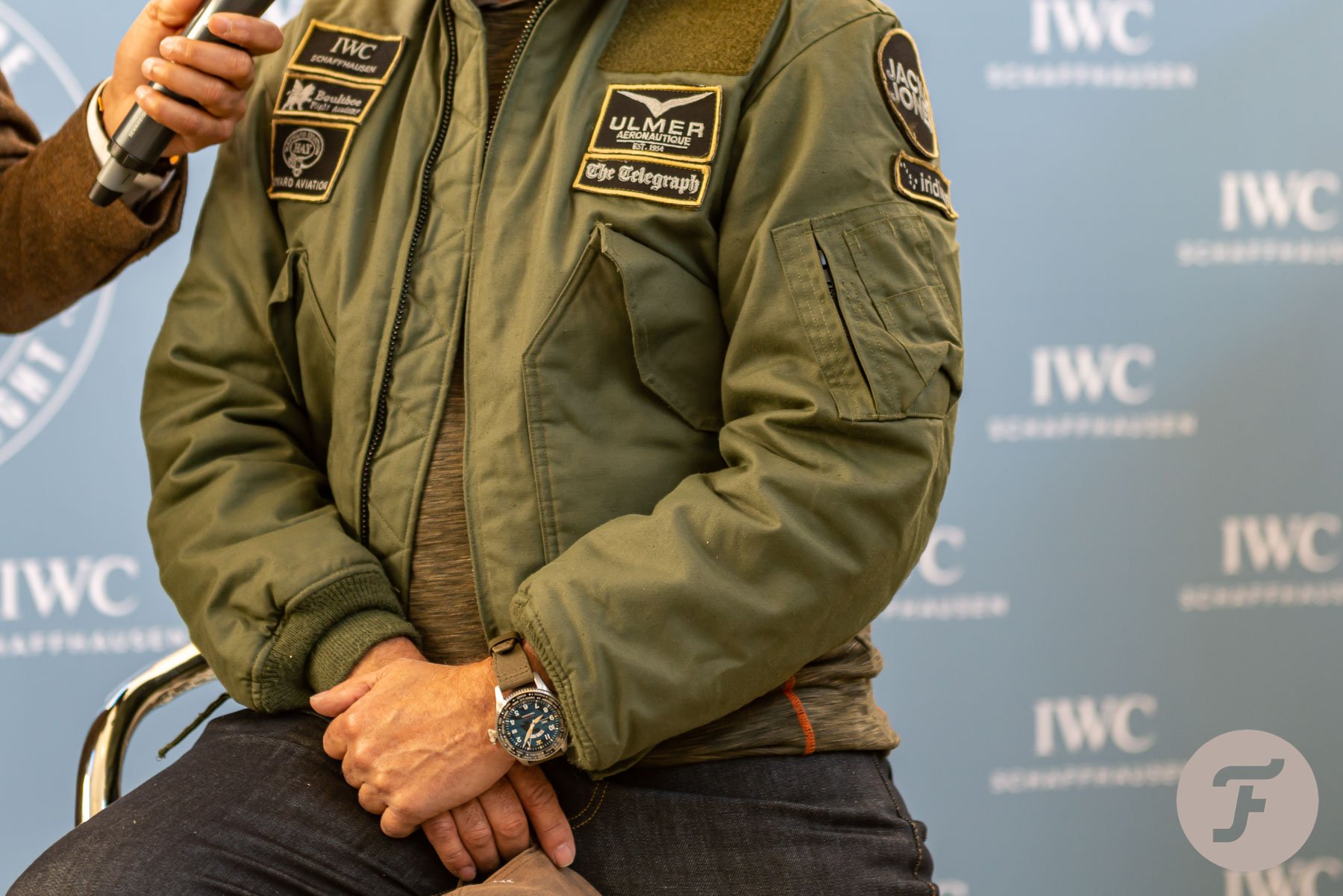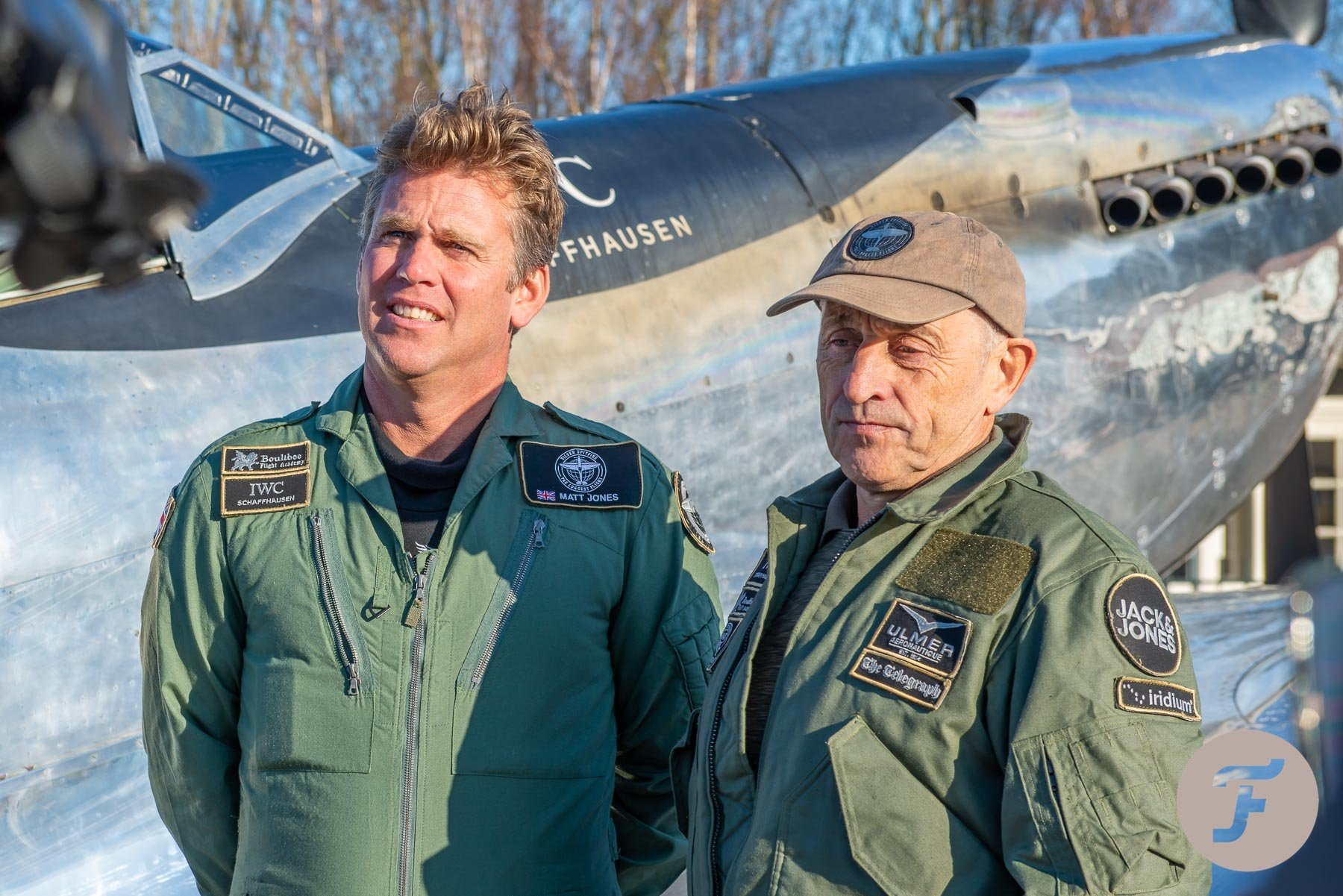Event Report: IWC Silver Spitfire Longest Flight Amsterdam Stopover
A trip around the world which started on August the 5th in Goodwood, UK, would end at the same airfield exactly 4 months later. With their goal in sight, the two pilots and their Silver Spitfire, however, first touched down in The Netherlands to pay homage to the country the Spitfire dwelled in most of its life.
We witnessed the IWC Silver Spitfire Longest Flight Amsterdam Stopover event at Lelystad Airport on December 4th, 2019.
- Steve Boultbee Brooks
- Matt Jones
Steve Boultbee Brooks and Matt Jones, fascinated by the extraordinary story of the engineering behind the Spitfire, founded the only recognized Spitfire flying school in the world. The Spitfire was designed as a fighter plane for the Royal Air Force, and it wrote history during the Battle of Britain. But mainly thanks to its characteristic, elliptically shaped wings, it is also a genuine design icon. The two British pilots took up the idea to fly around the globe and took their “Silver Spitfire” on its longest flight ever.
The IWC Silver Spitfire Amsterdam Stopover
After 73 legs, and only 300 miles away from bringing the carefully restored and polished MK IX Spitfire home, Steve and Matt took the effort to salute a Dutch IWC delegation and press at Lelystad Airport. After the welcome and a short briefing by Edwin de Vries (IWC brand manager for The Netherlands and Scandinavia), it was waiting for the Silver Spitfire to arrive outside in front of us.
The incredible sound of its 12-cylinder Rolls-Royce Merlin engine got us excited instantly. And the sight of the plane, helped by a cold but extremely sunny day, was nothing less than breathtaking. Besides the champagne at 11 o’clock in the morning, the other good thing was, once it arrived we could touch the plane and, of course, take pictures. Enjoy a few of them here below.
IWC Spitfire Timezoner
Of course, the plane and pilots were the stars of the show, and I’ll get back to those later. But first I would like to draw some attention to the watches which accompanied the two pilots on their trip around the world. Both wore an IWC Spitfire Timezoner. Balazs already briefly mentioned this watch in his SIHH 2019 IWC write-up here. IWC’s reference for the watch is IW395501, and its lists for € 13.500,=.
Now that that’s out of the way let’s talk about the specifications. The stainless steel casing of the IWC Spitfire Timezoner measures a serious 46 mm in diameter. It houses an IWC manufactured automatic movement, bearing the caliber number 82760. This 284 component movement has 22 jewels, ticks at 28.800 vph, and offers a power reserve of 60 hours. All in all, nothing to be ashamed of.
Sub-pressure safe
Specifically for use in open aircraft like the Spitfire, the convex sapphire crystal is secured against displacement by drop in air pressure. Around the crystal, we’ll find the 24-hour world-time display, it’s combined with IWC’s patented timezone function. Effectively the main time on the watch will change automatically to the timezone chosen by turning the outer bezel. A class act.
…what’s not to like?
Well to start with, some people might think the price of the watch is a bit steep. But with the ingenious complication of setting and changing timezones, we don’t think that’s the case. What we don’t like that much is that IWC decided to produce only 250 pieces of this watch. What a pity, almost a shame. Once every now and then, we see a well-succeeded watch being presented. Like we think is the case with this IWC Pilot Spitfire Timezoner. Why on earth should you only produce 250 pieces of it then? It feels almost unfair that only very few people will have access to this watch, while many will be left puzzled and have to learn that they have no possibility to buy it.
I was happy to borrow Matt Jones’ watch for a while during this event. I must admit, it did feel kind of special when I realized that this watch circumnavigated the world in a Spitfire. After 4 months of daily wear, in sometimes quite harsh conditions, the green fabric strap understandably showed some wear. But still, it wore quite comfortable and looked very good on the watch.
Back to the IWC Silver Spitfire and Pilots
Being build in 1943, and after serving the British RAF with around 50 flights in 1943 and 1944, this particular Spitfire Mark IX, the MJ271, was sent off to The Netherlands. Here it was used as a training aircraft by the Dutch Airforce. Finally, it ended up in a museum, where Boultbee Brooks and Jones tracked it down and bought it for restoration. Around 14 specialists worked on the intensive restoration process for more than two years. The aircraft was stripped down to its individual parts for restoration. Each of the around 80,000 rivets was carefully examined, cleaned and, if necessary, replaced. Every part of the “Silver Spitfire” was polished to make its design stand out. A special polishing procedure was used to create a mirror-bright finish while retaining the aircraft’s original patina.
The machine guns and ammunition bays have been replaced with auxiliary fuel tanks, each adds about 60 gallons to the total fuel capacity. A standard Spitfire holds roughly 80 gallons of fuel; the Silver Spitfire holds 200. The standard range is about 350 miles on a single fuel load, but with all kinds of modifications this Silver Spitfire can manage about 1000 miles.
Q & Session
After admiring the plane, and being introduced to the pilots, it was back inside for a Q & A session. The session was hosted by Humberto Tan, a Dutch TV-presenter and long-time IWC ambassador. After Humberto took some practical knowledge of the plane, he hosted the Q & A session. “What was the most exciting experience you had during the flight?” and “Were there any scary situations?” were of course questions that could not be avoided. I remember the pilots answering with “Flying over the pyramids in Egypt”, and the “Tricky handling of the plane when it was fully tanked”.
We would like to thank the pilots – with home in sight – for their effort to make this stopover and share their story with us. And of course, we would like to thank IWC for inviting us to the event. More information about the IWC Spitfire Timezoner watch can be found through the following link: www.iwc.com

